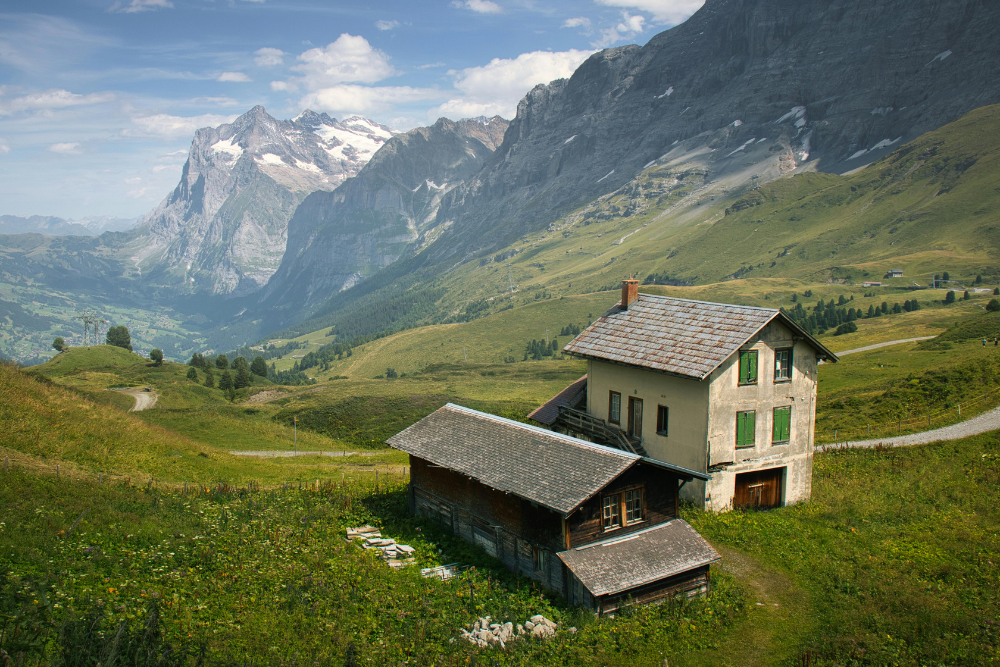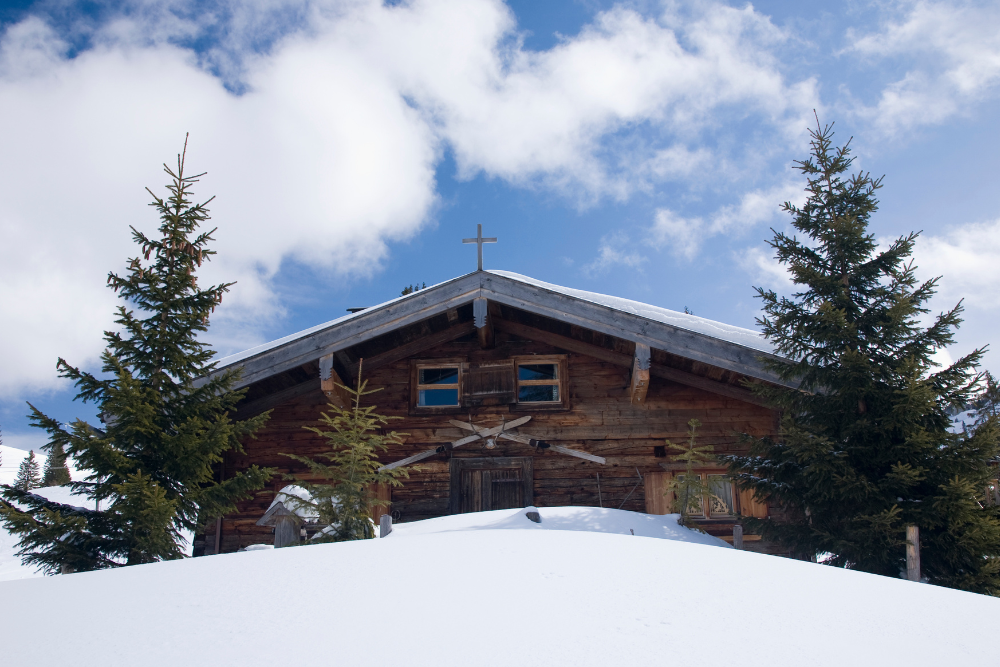Switzerland’s Alpine huts and mountain refuges offer a unique way to experience the breathtaking landscapes of the Swiss Alps. Nestled in remote valleys, perched on rocky cliffs, or hidden in dense forests, these huts provide shelter for hikers, climbers, and adventurers seeking an immersive experience in nature. Unlike traditional hotels, Swiss mountain huts blend rustic charm with stunning views, offering a true escape from the modern world.
This guide explores some of Switzerland’s hidden Alpine huts, their history, and why they are an essential part of any Swiss mountain adventure.
1. The Tradition of Swiss Alpine Huts
For centuries, Swiss mountain huts (Hütten) and refuges have served as shelters for shepherds, travelers, and mountaineers. Today, they provide hikers and climbers with basic accommodations in some of the country’s most remote locations.
What to Expect in a Swiss Alpine Hut
- Simple but cozy lodgings – Many huts offer bunk beds, wooden interiors, and communal dining areas.
- Traditional Swiss cuisine – Enjoy hearty meals like fondue, rösti, or alpine soups, often made with local ingredients.
- Spectacular scenery – Wake up to breathtaking sunrises over glaciers, valleys, and peaks.
- An escape from technology – Many huts have limited electricity and no Wi-Fi, offering a chance to disconnect.
Some huts are well-known and popular, while others remain hidden gems, accessible only to those who seek them out.
2. Hidden Alpine Huts to Discover
While many Swiss Alpine Club (SAC) huts are well-marked, some of the most spectacular and secluded refuges are lesser-known. Here are some secret mountain huts worth exploring.
Cabane du Mont Fort (Verbier, Valais)
Best for: Stunning panoramic views and a peaceful retreat
Located at 2,457 meters, this hut offers incredible views of the Mont Blanc Massif and the Grand Combin. It is a perfect overnight stop for those hiking the Haute Route from Chamonix to Zermatt.
- Why it’s special: Remote yet accessible, with breathtaking sunrise views over the Alps.
- How to get there: Hike from Verbier or take the ski lift and walk a short distance.
Capanna Cristallina (Ticino)
Best for: A mix of Alpine and Mediterranean influences
Tucked away in the Italian-speaking canton of Ticino, this modern refuge offers a stunning contrast between rugged mountains and green valleys.
- Why it’s special: A contemporary design that blends with its natural surroundings, offering a unique architectural experience.
- How to get there: A scenic trek from Airolo through the Val Bedretto.
Lämmerenhütte (Bernese Oberland)
Best for: Glacier trekking and solitude
Hidden above the Gemmi Pass, this secluded hut is surrounded by glaciers and towering peaks. It offers a true wilderness experience, with access to the stunning Wildstrubel Glacier.
- Why it’s special: Less crowded than other glacier huts, making it a great spot for those seeking peace.
- How to get there: A demanding hike from Leukerbad or Kandersteg.
Berggasthaus Aescher (Appenzell)
Best for: A dramatic location built into a cliffside
One of Switzerland’s most photographed and dramatic mountain huts, Aescher sits at the base of a towering rock face, offering sweeping views of the Appenzell region.
- Why it’s special: Its incredible location, seemingly hanging off the cliff.
- How to get there: Take the cable car from Wasserauen to Ebenalp, then hike 20 minutes.
Cabane de Moiry (Valais)
Best for: Stunning glacier views
This hut, perched above the Moiry Glacier, offers a close-up view of ice formations and rugged peaks. The dramatic scenery makes it one of the most beautiful glacier huts in Switzerland.
- Why it’s special: Floor-to-ceiling windows provide an unparalleled glacier panorama.
- How to get there: A moderate hike from the Moiry Dam near Grimentz.
3. Why Stay in an Alpine Hut?
A Unique Mountain Experience
Swiss Alpine huts provide a chance to experience the beauty of the mountains without the crowds. Unlike hotels in tourist-heavy areas, these huts offer seclusion, authenticity, and a deep connection with nature.
Affordable and Accessible
Despite Switzerland’s reputation for expensive travel, mountain huts offer affordable accommodations. Many operate on a shared-room basis, making them a budget-friendly option for hikers and adventurers.
A Chance to Disconnect
With no Wi-Fi, limited electricity, and no city noise, staying in a hut is a chance to truly disconnect and enjoy the simplicity of mountain life. Nights are often spent sharing stories with fellow hikers over a warm meal, creating a communal and welcoming atmosphere.
4. Essential Tips for Staying in a Swiss Mountain Hut
1. Book in Advance
Many huts require reservations, especially during peak hiking seasons (summer and early autumn). Check availability on the Swiss Alpine Club (SAC) website or the hut’s official page.
2. Bring Cash
Most huts do not accept credit cards, so bring Swiss francs to cover your stay, meals, and drinks.
3. Pack Light but Smart
- A sleeping bag liner (huts provide blankets but expect you to bring your own liner).
- Headlamp or flashlight (some huts have limited electricity).
- Warm layers (mountain temperatures drop quickly at night).
- Earplugs (shared dormitories can be noisy).
4. Respect Hut Etiquette
- Remove boots before entering (most huts provide slippers).
- Keep quiet at night—many hikers wake up early for sunrise treks.
- Follow the hut’s meal schedule—dinners are usually served at a set time.
5. The Best Time to Visit Alpine Huts
- Summer (June – September): Best for hiking, with clear trails and mild weather.
- Autumn (September – October): Fewer crowds, beautiful fall foliage, and crisp mountain air.
- Winter (December – March): Some huts remain open for ski touring and snowshoeing, offering a magical snow-covered landscape.
Conclusion
Switzerland’s secret Alpine huts and mountain refuges offer a unique way to experience the beauty and solitude of the Alps. Whether you seek glacier views, dramatic cliffside lodgings, or a peaceful retreat in a remote valley, these hidden gems provide an unforgettable adventure.
For those looking to escape the crowds and immerse themselves in nature, a stay in a Swiss mountain hut is the perfect way to explore the heart of the Alps.












